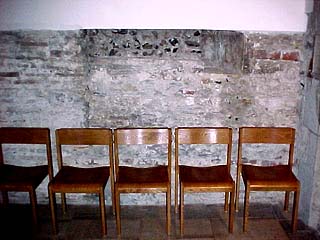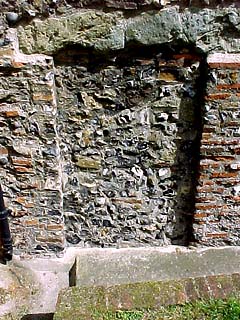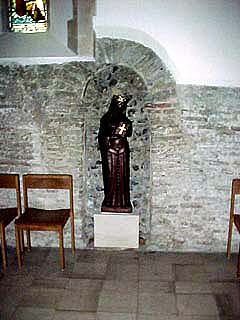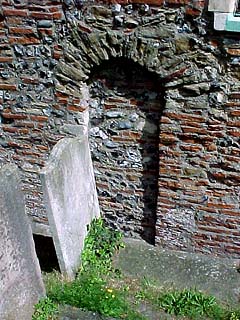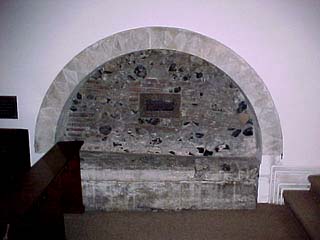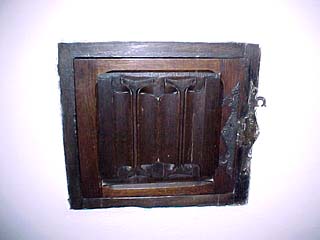|
Saint Martin's Church - description
page 6 |
|
This is the sixth page of the booklet about Saint Martin's Church. To go back to the last page click here. To go back to the Saint Martin's main page click here. |
|
The Chancel Arch is of the Early English period of the early 13th century, the bottom portion having been restored about 1844.
On entering the Chancel, immediately on our right and extending 20 ft. Eastwards, we have what is probably the finest piece of Roman Wall left in the Church. The portion near the Altar Rail is exceptionally good, and built entirely of Roman bricks.
The two doorways in this wall are both early ones. The square-headed is an original Roman and the small round one is Saxon. This is probably the one used by Queen Bertha.
Further Eastwards, inside the Sanctuary, we have an Early English Sedilia, or seat for clergy. The arch of this is turned with Roman bricks probably taken from the demolished Eastern Apse. Opposite the Sedilia in the North wall is an ancient tomb, often described as the tomb of Queen Bertha, but much more likely to have been the tomb of a restorer of the Church towards the end of the twelfth century. This tomb was opened in 1897 and found to contain nothing but builders' rubbish. The brass above the tomb was placed here by the late Canon Chesshyre, a former Rector of the parish. It reads: "If by chance near here rest the remains of Bertha, wife of King Ethelbert, let them rest in peace until the last coming of the Lord Jesus".
^ Near this tomb in the wall is a pre-Reformation Aumbry, "a storage cupboard for the Holy Vessels". It has a linen fold panelled door, dating from the 15th century.
^ |


